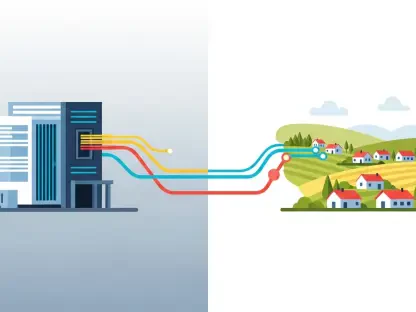A Speedy Internet, Unshackled by Bureaucratic Delays
What if Americans could enjoy faster and more affordable internet access without cumbersome bureaucratic processes standing in the way? This question is no longer hypothetical. The National Telecommunications and Information Administration (NTIA) is spearheading a transformative approach to broadband expansion. Recent revisions to the Broadband Equity, Access, and Deployment (BEAD) program promise to streamline and democratize internet access across the nation, ensuring that technological advancement isn’t stifled by outdated regulations.
Why Broadband Expansion Matters
As societies increasingly hinge on digital connectivity, broadband access has become a linchpin for personal and economic growth. Education, remote work, telemedicine, and e-commerce all rely on fast, reliable internet connectivity. Yet, numerous American communities remain without adequate internet access, limiting opportunities and constraining economic development. This digital divide exacerbates regional inequalities and hinders broader economic progress. The NTIA’s move could be a crucial step towards bridging this gap.
The Essence of BEAD Program Modifications
The overhaul of the BEAD program fundamentally reshapes the landscape for broadband infrastructure projects. By adopting a technology-neutral stance, the NTIA aims to cultivate innovation and competition. Traditional regulations often favored specific technologies, discouraging potential solutions that could offer better efficiency or cost-effectiveness. Now, emerging technologies can compete on equal footing, potentially speeding up deployment and reducing costs. This shift not only empowers technological diversity but also reinforces the overarching goal of maximizing taxpayer investments.
Insights and Perspectives from Industry Experts
Industry leaders and technology specialists have weighed in on these changes, offering insights into their potential impact. Many experts assert that these program reforms could usher in a new era of connectivity by reducing financial and regulatory hurdles. Previously, extensive bureaucratic procedures lengthened project timelines and inflated costs, but the NTIA’s revisions address these challenges head-on. Historical case studies reveal that bureaucratic bottlenecks have long stymied progress, and the current reforms are expected to significantly mitigate these issues.
Practical Implementation for State and Local Authorities
To assist states and territories in adopting these reforms swiftly, the NTIA has introduced several key strategies. One such method is the “Benefit of the Bargain Round,” which will refine subgrantee selection processes to ensure cost-efficient and timely execution. Additionally, the Environmental Screening and Permitting Tracking Tool (ESAPTT) has been developed to streamline compliance with environmental regulations, thereby accelerating the necessary permitting processes. Navigating the 90-day adoption window will require strategic planning and coordination to make full use of these tools efficiently.
In reflecting on the NTIA’s reforms to the BEAD program, it is clear that this initiative marks a significant shift in the approach to broadband expansion. Policymakers, stakeholders, and communities should eagerly anticipate the benefits of these changes as practical applications unfold. The focus on cutting bureaucratic tape has laid the groundwork for substantial improvements in internet access across the United States. By fostering an environment of technological competition and reducing regulatory hurdles, the NTIA’s new strategies promise to transform the digital landscape, thereby creating a more connected and productive society.









